
实用水文篇--SpringBoot整合Netty实现消息推送服务器
由于今天是要练车的,所以的话只能写一点简单的东西了,做一个整合吧,刚好先前随便说了一下Netty是吧,那么我们就直接实战吧,我们来整合一下Netty。我的设想是使用Netty来实现客户端消息的实时推送,就是这个破玩意:当然还有咱们的聊天,用户聊天,反正都做推送了,再加一个用户聊天有何不可。都TM是一个玩意。那么既然咱们是使用SpringBoot或者是Spring的话,那么我们就刚好直接使用IOC来
文章目录
前言
由于今天是要练车的,所以的话只能写一点简单的东西了,做一个整合吧,刚好先前随便说了一下Netty是吧,那么我们就直接实战吧,我们来整合一下Netty。我的设想是使用Netty来实现客户端消息的实时推送,就是这个破玩意:

当然还有咱们的聊天,用户聊天,反正都做推送了,再加一个用户聊天有何不可。都TM是一个玩意。
那么既然咱们是使用SpringBoot或者是Spring的话,那么我们就刚好直接使用IOC来实例化咱们的Netty。那么这样的话,我们可以使用Netty来实现实时的消息推送,以及在线用户聊天功能,同时的话,对于咱们后台的管理系统也刚好有这个需求,有新的博文审核消息啥的这个要推送给后台的。那么同时为了提高整个实时在线的工作效率,数据的存储直接进行异步处理,这个方案很多,那么最省事的就是搞个线程池+异步任务就完了,或者直接MQ过去,然后存储,反正这种数据丢了也没事。像博文,问答之类的数据,这些注意一点就完了。
那么本文的话,两个目标,第一个是怎么整合,服务端和客户端怎么整合。第二个就是我们实际上就是说,创建一个服务端,可以完成websock协议。
项目创建
首先我们创建一个新的项目。
在我这里的话是已经创建好了:
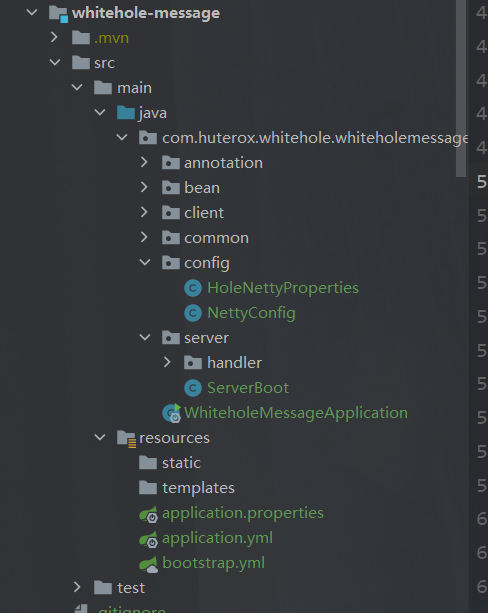
可以看到,我这里的话,做戏做全套,那么这里有两个端,一个是Server,还有是Client,什么意思,就是说,你使用Netty做服务端可以,做客户端链接其他的服务器也可以,rpc嘛。
例如:
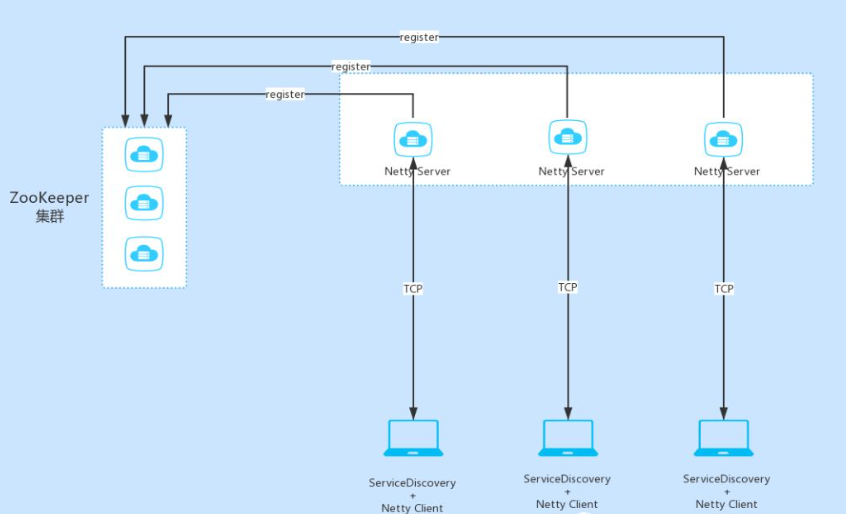
整合
导入依赖
首先是导入依赖,这里的话是SpringBoot,那么直接导入这个就完了:
<!-- 导入Netty的依赖-->
<dependency>
<groupId>io.netty</groupId>
<artifactId>netty-all</artifactId>
</dependency>
编写相关配置
既然是用到了SpringBoot,那么我们直接把对应的配置给提取出来:
#Netty的一些配置
netty:
boss: 4
worker: 2
timeout: 6000
port: 9000
#多端口绑定
portSalve: 9001
host: 127.0.0.1
这个看你自己,我这里演示就是多端口的。值得一提的是这个演示的,演示完就删了哈,所以这篇博文会尽可能详细。毕竟,我以后搞不好还会回来copy。
服务端创建
首先是我们的服务端,那么在这里的话,我们想要创建一个Netty服务,基本上就三个东西,一个是我们选择哪一个线程模型,这里我们显然选择主从模型。所以的话,那么我们就需要准备两个线程组,之后的话是我们的初始化器,用来初始化Handler,之后是我们自定义的Handler。这里为了更好地演示,我们这里以创建Http处理的为例子。之后的话我们以创建websocket为例子。
ok,既然如此我们知道了需要那些东西,那么我们直接去搞就好了。
读取配置
首先要做的就是读取配置,我这里准备了专门的配置类。
import lombok.Data;
import org.springframework.boot.context.properties.ConfigurationProperties;
import org.springframework.context.annotation.Configuration;
@ConfigurationProperties(prefix = "netty")
@Data
@Configuration
public class HoleNettyProperties {
// boss线程数量 默认为cpu线程数*4
private Integer boss;
// worker线程数量 默认为cpu线程数*2
private Integer worker;
// 连接超时时间 默认为30s
private Integer timeout = 30000;
// 服务器主端口 默认9000
private Integer port = 9000;
// 服务器备用端口
private Integer portSalve = 9001;
// 服务器地址 默认为本地
private String host = "127.0.0.1";
}
配置类
之后的话,是我们的一个配置:
这个配置主要就是声明一个Bootstrap开启服务,之后绑定我们设定的配置和处理器。
@Configuration
@EnableConfigurationProperties
public class NettyConfig {
@Autowired
HoleNettyProperties holeNettyProperties;
/**
* boss 线程池
* 负责客户端连接
* @return
*/
@Bean
public NioEventLoopGroup boosGroup(){
return new NioEventLoopGroup(holeNettyProperties.getBoss());
}
/**
* worker线程池
* 负责业务处理
* @return
*/
@Bean
public NioEventLoopGroup workerGroup(){
return new NioEventLoopGroup(holeNettyProperties.getWorker());
}
/**
* 服务器启动器
* @return
*/
@Bean
public ServerBootstrap serverBootstrap(){
ServerBootstrap serverBootstrap = new ServerBootstrap();
serverBootstrap
.group(boosGroup(),workerGroup()) // 指定使用的线程组
.channel(NioServerSocketChannel.class) // 指定使用的通道
.option(ChannelOption.CONNECT_TIMEOUT_MILLIS,holeNettyProperties.getTimeout()) // 指定连接超时时间
.childHandler(new ServerHandler()); // 指定worker处理器
return serverBootstrap;
}
/**
* 客户端启动器
* @return
*/
@Bean
public Bootstrap bootstrap(){
// 新建一组线程池
NioEventLoopGroup eventExecutors = new NioEventLoopGroup(holeNettyProperties.getBoss());
Bootstrap bootstrap = new Bootstrap();
bootstrap
.group(eventExecutors) // 指定线程组
.option(ChannelOption.SO_KEEPALIVE, true)
.channel(NioSocketChannel.class) // 指定通道
.handler(new ClientHandler()); // 指定处理器
return bootstrap;
}
}
可以看到的话,我们这里是有两个的,一个是用来创建服务端的,还有一个是用来创建客户端的。在这里的话,我们主要还是做声明。
区别是 在于指定线程组。以及在我们后面真正实例化的时候,前者是监听,后者是连接。
服务处理器 ServerHandler
这个玩意其实就是用来做初始化的。
public class ServerHandler extends ChannelInitializer<SocketChannel> {
/**
* 初始化通道以及配置对应管道的处理器
* @param socketChannel
* @throws Exception
*/
@Override
protected void initChannel(SocketChannel socketChannel) throws Exception {
ChannelPipeline pipeline = socketChannel.pipeline();
pipeline.addLast(new MessageDecodeHandler());
pipeline.addLast(new MessageEncodeHandler());
pipeline.addLast(new ServerListenerHandler());
}
}
同时在这里指定了两个消息的编解码器。
public class MessageDecodeHandler extends ByteToMessageDecoder {
@Override
protected void decode(ChannelHandlerContext channelHandlerContext, ByteBuf byteBuf, List<Object> list) throws Exception {
int len = byteBuf.readInt();
byte[] content = new byte[len];
byteBuf.readBytes(content);
MessageBean messageBean = new MessageBean();
messageBean.setContent(content);
messageBean.setLen(len);
list.add(messageBean);
}
}
public class MessageEncodeHandler extends MessageToByteEncoder<MessageBean> {
@Override
protected void encode(ChannelHandlerContext channelHandlerContext, MessageBean messageBean, ByteBuf byteBuf) throws Exception {
byteBuf.writeInt(messageBean.getLen());
byteBuf.writeBytes(messageBean.getContent());
}
}
那么同样的,我们声明了一个Bean,专门用来承载消息的,主要是转JSON用的。
@Data
@AllArgsConstructor
@NoArgsConstructor
public class MessageBean {
/**
* 数据长度
*/
private Integer len;
/**
* 通讯数据
*/
private byte[] content;
public MessageBean(Object object) {
content = JSONUtil.toJsonStr(object).getBytes(StandardCharsets.UTF_8);
len = content.length;
}
}
这里的话还是用到了JSONUtil,所以的话,还需要导入依赖:
<dependency>
<groupId>cn.hutool</groupId>
<artifactId>hutool-all</artifactId>
<version>${hutool.version}</version>
<!-- <hutool.version>5.5.4</hutool.version>-->
</dependency>
注意自己对应的版本号,我这里是5.5.4
自定义处理器
最后是我们的自定义处理器,这个东西就是我们实现业务的核心。但是我们这边只是演示,所以的话就随便一点了。
@Slf4j
@ChannelHandler.Sharable
public class ClientListenerHandler extends SimpleChannelInboundHandler<MessageBean> {
/**
* 服务端上线的时候调用
* @param ctx
* @throws Exception
*/
@Override
public void channelActive(ChannelHandlerContext ctx) throws Exception {
log.info("{}连上了服务器",ctx.channel().remoteAddress());
}
/**
* 服务端掉线的时候调用
* @param ctx
* @throws Exception
*/
@Override
public void channelInactive(ChannelHandlerContext ctx) throws Exception {
log.info("{}断开了服务器",ctx.channel().remoteAddress());
ctx.fireChannelInactive();
}
/**
* 读取服务端消息
* @param channelHandlerContext
* @param messageBean
* @throws Exception
*/
@Override
protected void channelRead0(ChannelHandlerContext channelHandlerContext, MessageBean messageBean) throws Exception {
log.info("来自服务端的消息:{}",new String(messageBean.getContent(), CharsetUtil.UTF_8));
channelHandlerContext.channel().close();
}
/**
* 异常发生时候调用
* @param ctx
* @param cause
* @throws Exception
*/
@Override
public void exceptionCaught(ChannelHandlerContext ctx, Throwable cause) throws Exception {
log.error("{}连接出异常了",ctx.channel().remoteAddress());
log.error(ExceptionUtil.printStackTrace((Exception) cause));
ctx.close();
}
}
同时这块也有一个异常写入类,用来返回这个错误的,这个看你自己,不要也罢
public class ExceptionUtil {
public static String printStackTrace(Exception e){
Writer writer = new StringWriter();
PrintWriter printWriter = new PrintWriter(writer);
e.printStackTrace(printWriter);
printWriter.close();
return writer.toString();
}
}
自定义启动类
ok,现在的话我们已经准备好了我们需要的东西(基本上),配置,处理器,线程组,用来开启服务的Bootstrap。那么既然是做SpringBoot的整合,那么我们就在更进一步,待会的的话,我们再搞一个注解。
@Component
@Slf4j
public class ServerBoot {
@Autowired
ServerBootstrap serverBootstrap;
@Resource
NioEventLoopGroup boosGroup;
@Resource
NioEventLoopGroup workerGroup;
@Autowired
HoleNettyProperties holeNettyProperties;
/**
* 开机启动
* @throws InterruptedException
*/
@PostConstruct
public void start() throws InterruptedException {
// 绑定端口启动
serverBootstrap.bind(holeNettyProperties.getPort()).sync();
serverBootstrap.bind(holeNettyProperties.getPortSalve()).sync();
log.info("启动Netty多端口服务器: {},{}",holeNettyProperties.getPort(),holeNettyProperties.getPortSalve());
}
/**
* 关闭线程池
*/
@PreDestroy
public void close() throws InterruptedException {
log.info("关闭Netty服务器");
boosGroup.shutdownGracefully();
workerGroup.shutdownGracefully();
}
}
之后,我们创建一个启动注解。
@Import(ServerBoot.class)
@Target(ElementType.TYPE)
@Retention(RetentionPolicy.RUNTIME)
@Documented
public @interface EnableNettyServer {
}
之后要用的时候就直接:
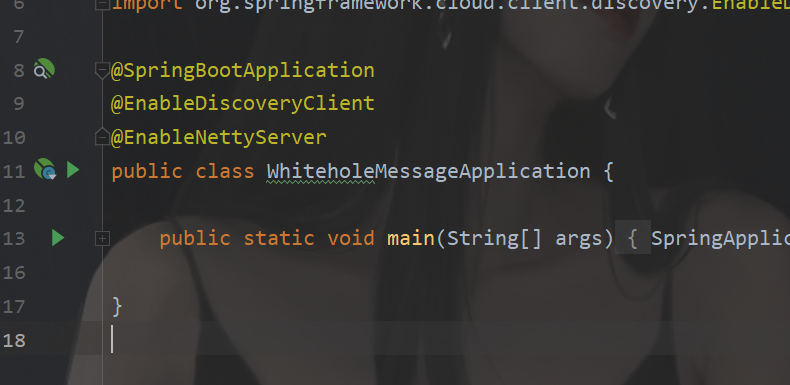
客户端
之后的话,就是我们的客户端的处理。首先配置类俺已经给出来了。区别呢就是咱们的处理器和启动类。
处理器 ClientHandler
首先一样的编解码处理
public class ClientHandler extends ChannelInitializer<SocketChannel> {
@Override
protected void initChannel(SocketChannel socketChannel) throws Exception {
ChannelPipeline pipeline = socketChannel.pipeline();
pipeline.addLast(new MessageEncodeHandler());
pipeline.addLast(new MessageDecodeHandler());
pipeline.addLast(new ClientListenerHandler());
}
}
之后的话是我们具体的业务逻辑:
@Slf4j
@ChannelHandler.Sharable
public class ClientListenerHandler extends SimpleChannelInboundHandler<MessageBean> {
/**
* 服务端上线的时候调用
* @param ctx
* @throws Exception
*/
@Override
public void channelActive(ChannelHandlerContext ctx) throws Exception {
log.info("{}连上了服务器",ctx.channel().remoteAddress());
}
/**
* 服务端掉线的时候调用
* @param ctx
* @throws Exception
*/
@Override
public void channelInactive(ChannelHandlerContext ctx) throws Exception {
log.info("{}断开了服务器",ctx.channel().remoteAddress());
ctx.fireChannelInactive();
}
/**
* 读取服务端消息
* @param channelHandlerContext
* @param messageBean
* @throws Exception
*/
@Override
protected void channelRead0(ChannelHandlerContext channelHandlerContext, MessageBean messageBean) throws Exception {
log.info("来自服务端的消息:{}",new String(messageBean.getContent(), CharsetUtil.UTF_8));
channelHandlerContext.channel().close();
}
/**
* 异常发生时候调用
* @param ctx
* @param cause
* @throws Exception
*/
@Override
public void exceptionCaught(ChannelHandlerContext ctx, Throwable cause) throws Exception {
log.error("{}连接出异常了",ctx.channel().remoteAddress());
log.error(ExceptionUtil.printStackTrace((Exception) cause));
ctx.close();
}
}
启动类
之后还是我们的启动类,这个就是和服务的不一样的玩意:
@Component
public class ClientBoot {
@Autowired
Bootstrap bootstrap;
@Autowired
HoleNettyProperties holeNettyProperties;
/**
* 主端口连接
* @return
* @throws InterruptedException
*/
public Channel connect() throws InterruptedException {
// 连接服务器
ChannelFuture channelFuture = bootstrap.connect(holeNettyProperties.getHost(), holeNettyProperties.getPort()).sync();
// 监听关闭
Channel channel = channelFuture.channel();
return channel;
}
/**
* 备用端口连接
* @return
* @throws InterruptedException
*/
public Channel connectSlave() throws InterruptedException {
// 连接服务器
ChannelFuture channelFuture = bootstrap.connect(holeNettyProperties.getHost(), holeNettyProperties.getPort()).sync();
// 监听关闭
Channel channel = channelFuture.channel();
channel.closeFuture().sync();
return channel;
}
/**
* 发送消息到服务器端
* @return
*/
public void sendMsg(MessageBean messageBean) throws InterruptedException {
connect().writeAndFlush(messageBean);
}
}
之后也是我们的启动注解
@Target(ElementType.TYPE)
@Retention(RetentionPolicy.RUNTIME)
@Documented
@Import(ClientBoot.class)
public @interface EnableNettyClient {
}
如果你想要同时开启也是可以的,但是注意改一下配置,否则的话,串了。
@Target(ElementType.TYPE)
@Retention(RetentionPolicy.RUNTIME)
@Documented
@EnableNettyClient
@EnableNettyServer
public @interface EnableNetty {
}
ok,那么这块的就是最基本的整合。
聊天服务器创建实例
ok,那么现在的话,我们就来创建一下聊天服务器,我们使用的websocket 也就是ws协议。
首先还是我们的配置,这里的话,我就使用单端口了。
那么我们修改完成后一个样子是这样的:
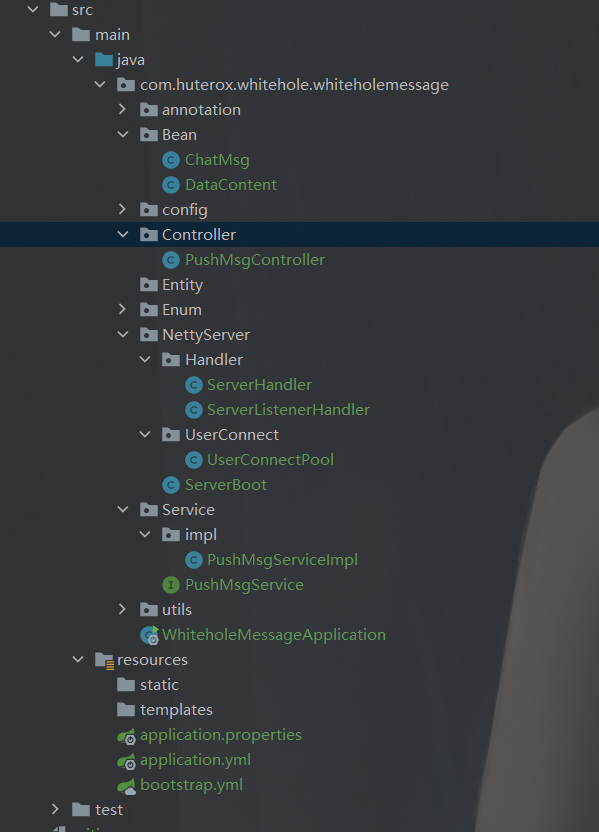
我们甚至提取出了一个Controller。
这个Controller的作用很大,我们可以直接通过Controller对客户端进行消息推送,例如你的博文审核通过了,我们可以通过这个在线通知你(前提是你在线)。而且这里的话也有个好处嘛,就是说,我们的客户端只需要进行监听,发送消息可以通过正常的http请求,这样的话最起码作为一个分布式的项目,请求还是到了网关的,我们还是可以进行监控的,同时也可确保安全,因为我们对于很多的一些处理可以在Controller进行操作,只是用Netty进行消息转发。
工具类
这里的话,我们使用到这几个工具类:

/**
* 异常打印工具类
*/
public class ExceptionUtil {
public static String printStackTrace(Exception e){
Writer writer = new StringWriter();
PrintWriter printWriter = new PrintWriter(writer);
e.printStackTrace(printWriter);
printWriter.close();
return writer.toString();
}
}
/**
* @Description: 自定义响应结构, 转换类
*/
public class JsonUtils {
// 定义jackson对象
private static final ObjectMapper MAPPER = new ObjectMapper();
/**
* 将对象转换成json字符串。
* <p>Title: pojoToJson</p>
* <p>Description: </p>
* @param data
* @return
*/
public static String objectToJson(Object data) {
try {
String string = MAPPER.writeValueAsString(data);
return string;
} catch (JsonProcessingException e) {
e.printStackTrace();
}
return null;
}
/**
* 将json结果集转化为对象
*
* @param jsonData json数据
* @param beanType 对象类型
* @return
*/
public static <T> T jsonToPojo(String jsonData, Class<T> beanType) {
try {
T t = MAPPER.readValue(jsonData, beanType);
return t;
} catch (Exception e) {
e.printStackTrace();
}
return null;
}
/**
* 将json数据转换成pojo对象list
* <p>Title: jsonToList</p>
* <p>Description: </p>
* @param jsonData
* @param beanType
* @return
*/
public static <T>List<T> jsonToList(String jsonData, Class<T> beanType) {
JavaType javaType = MAPPER.getTypeFactory().constructParametricType(List.class, beanType);
try {
List<T> list = MAPPER.readValue(jsonData, javaType);
return list;
} catch (Exception e) {
e.printStackTrace();
}
return null;
}
}
那个StringUtils老朋友,一大把,我这里就不粘贴了,实际上我也没用到那个玩意。
消息转换
首先我们这个是直接基于websocket协议来的,因为要实现这个长连接监听嘛。
所以在消息转换这里略有不同:
这里的话和先前的区别就是这个:
/**
* 定义worker端的处理器
*/
public class ServerHandler extends ChannelInitializer<SocketChannel> {
/**
* 初始化通道以及配置对应管道的处理器
* @param socketChannel
* @throws Exception
*/
@Override
protected void initChannel(SocketChannel socketChannel) throws Exception {
ChannelPipeline pipeline = socketChannel.pipeline();
// 流水线管理通道中的处理程序(Handler),用来处理业务
// webSocket协议本身是基于http协议的,所以这边也要使用http编解码器
pipeline.addLast(new HttpServerCodec());
pipeline.addLast(new ChunkedWriteHandler());
pipeline.addLast(new HttpObjectAggregator(1024*64));
pipeline.addLast(new WebSocketServerProtocolHandler("/ws"));
pipeline.addLast(new ServerListenerHandler());
}
}
这个玩意我们改变了,同时我们也没有先前的编解码器了。

配置
这个配置的话,和先前一样,区别就是咱们是单接口嘛:
#Netty的一些配置
netty:
boss: 1
worker: 4
timeout: 6000
port: 9000
host: 127.0.0.1
@ConfigurationProperties(prefix = "netty")
@Data
@Configuration
public class HoleNettyProperties {
/**
* boss线程数量 默认为cpu线程数*2
*/
private Integer boss;
/**
* worker线程数量 默认为cpu线程数*2
*/
private Integer worker;
/**
* 连接超时时间 默认为30s
*/
private Integer timeout = 30000;
/**
* 服务器主端口 默认9000
*/
private Integer port = 9000;
private String host = "127.0.0.1";
}
然后咱们的配置类就是这样了:
@Configuration
@EnableConfigurationProperties
public class NettyConfig {
@Autowired
HoleNettyProperties holeNettyProperties;
/**
* boss 线程池
* 负责客户端连接
* @return
*/
@Bean
public NioEventLoopGroup boosGroup(){
return new NioEventLoopGroup(holeNettyProperties.getBoss());
}
/**
* worker线程池
* 负责业务处理
* @return
*/
@Bean
public NioEventLoopGroup workerGroup(){
return new NioEventLoopGroup(holeNettyProperties.getWorker());
}
/**
* 服务器启动器
* @return
*/
@Bean
public ServerBootstrap serverBootstrap(){
ServerBootstrap serverBootstrap = new ServerBootstrap();
serverBootstrap
.group(boosGroup(),workerGroup()) // 指定使用的线程组
.channel(NioServerSocketChannel.class) // 指定使用的通道
.option(ChannelOption.CONNECT_TIMEOUT_MILLIS,holeNettyProperties.getTimeout()) // 指定连接超时时间
.childHandler(new ServerHandler()); // 指定worker处理器
return serverBootstrap;
}
}
消息封装
为了这个更好的处理,咱们就把这个String转化为一个标准的Bean,也方便后面转化为Entity,也就是实体嘛。

@Data
@AllArgsConstructor
@NoArgsConstructor
public class ChatMsg implements Serializable {
private String senderId;
private String receiverId;
private String msg;
private String msgId;
}
@Data
@AllArgsConstructor
@NoArgsConstructor
public class DataContent implements Serializable {
private Integer action;
private ChatMsg chatMsg;
private String extend;
}
这个的话,你可以自己看着改。
反正我这个样例就是这样的,后面我也要改。
消息处理
之后就是我们的服务处理的Handler了。
在这里的话,我这里还定义了一个枚举类,主要是用来这样的:
public enum MessageActionEnum {
//定义消息类型
CONNECT(1,"第一次(或重连)初始化连接"),
CHAT(2,"聊天消息"),
SIGNED(3,"消息签收"),
KEEPALIVE(4,"客户端保持心跳"),
PULL_FRIEND(5, "拉取好友");
public final Integer type;
public final String content;
MessageActionEnum(Integer type,String content) {
this.type = type;
this.content = content;
}
}
定义消息的类型。这个在Controller可以用,在Netty的服务里面也可以使用,看你自己,这里咱们演示的话就,还是和正常的一样。全部在Netty的服务里面用的,后面怎么玩其实很好想像,待会看到Controller的代码就懂了。
那么这里还是看到这个代码
@Component
@ChannelHandler.Sharable
public class ServerListenerHandler extends SimpleChannelInboundHandler<TextWebSocketFrame> {
private static final Logger log = LoggerFactory.getLogger(ServerBoot.class);
/**
* 当建立链接时将Channel放置在Group当中
*/
@Override
public void handlerAdded(ChannelHandlerContext ctx) throws Exception {
log.info("有新的客户端链接:[{}]", ctx.channel().id().asLongText());
// 添加到channelGroup 通道组
UserConnectPool.getChannelGroup().add(ctx.channel());
}
/**
* 读取数据
*/
@Override
protected void channelRead0(ChannelHandlerContext ctx, TextWebSocketFrame msg) throws Exception {
/**
* 1.接受到msg
* 2.将msg转化为实体类
* 3.解析消息类型
* 将实体类当中的userid和连接的Channel进行对应
* */
String content = msg.text();
Channel channel = ctx.channel();
DataContent dataContent = JsonUtils.jsonToPojo(content, DataContent.class);
assert dataContent != null;
Integer action = dataContent.getAction();
if(Objects.equals(action, MessageActionEnum.CONNECT.type)){
//进行关联注册
String senderId = dataContent.getChatMsg().getSenderId();
UserConnectPool.getChannelMap().put(senderId,channel);
// 将用户ID作为自定义属性加入到channel中,方便随时channel中获取用户ID
AttributeKey<String> key = AttributeKey.valueOf("userId");
ctx.channel().attr(key).setIfAbsent(senderId);
}else if(Objects.equals(action, MessageActionEnum.CHAT.type)){
/**
* 解析你的消息,然后进行持久化,或者其他的操作,看你自己
* */
ChatMsg chatMsg = dataContent.getChatMsg();
//发送消息
Channel receiverChannel = UserConnectPool.getChannel(chatMsg.getReceiverId());
if(receiverChannel==null){
//用户不在线
}else {
//为了保险起见你还可以在你的Group里面去查看有没有这样的Channel
//毕竟不太能够保证原子性操作嘛,反正底层也是CurrentMap
Channel findChannel = UserConnectPool.getChannelGroup().find(ctx.channel().id());
if(findChannel!=null){
receiverChannel.writeAndFlush(
new TextWebSocketFrame(
JsonUtils.objectToJson(chatMsg)
)
);
}else {
//离线
}
}
}else if (Objects.equals(action, MessageActionEnum.SIGNED.type)){
}else if (Objects.equals(action, MessageActionEnum.KEEPALIVE.type)){
}else if(Objects.equals(action, MessageActionEnum.PULL_FRIEND.type)){
}
}
@Override
public void handlerRemoved(ChannelHandlerContext ctx) throws Exception {
log.info("用户下线了:{}", ctx.channel().id().asLongText());
// 删除通道
UserConnectPool.getChannelGroup().remove(ctx.channel());
removeUserId(ctx);
}
@Override
public void exceptionCaught(ChannelHandlerContext ctx, Throwable cause) throws Exception {
//打印异常
log.info("异常:{}", cause.getMessage());
// 删除通道
UserConnectPool.getChannelGroup().remove(ctx.channel());
removeUserId(ctx);
ctx.close();
}
/**
* 删除用户与channel的对应关系
*/
private void removeUserId(ChannelHandlerContext ctx) {
AttributeKey<String> key = AttributeKey.valueOf("userId");
String userId = ctx.channel().attr(key).get();
UserConnectPool.getChannelMap().remove(userId);
}
}
同时在这里的话,我们还有这个玩意:

然后这个玩意是这样的,有一个存储Channel的列表,还有一个MAP。
public class UserConnectPool {
//主要是为了广播消息
private static volatile ChannelGroup channelGroup = null;
/**
* 存放请求ID与channel的对应关系
*/
private static volatile ConcurrentHashMap<String, Channel> channelMap = null;
/**
* 定义两把锁
*/
private static final Object lock1 = new Object();
private static final Object lock2 = new Object();
public static ChannelGroup getChannelGroup() {
if (null == channelGroup) {
synchronized (lock1) {
if (null == channelGroup) {
channelGroup = new DefaultChannelGroup(GlobalEventExecutor.INSTANCE);
}
}
}
return channelGroup;
}
public static ConcurrentHashMap<String, Channel> getChannelMap() {
if (null == channelMap) {
synchronized (lock2) {
if (null == channelMap) {
channelMap = new ConcurrentHashMap<>();
}
}
}
return channelMap;
}
public static Channel getChannel(String userId) {
if (null == channelMap) {
return getChannelMap().get(userId);
}
return channelMap.get(userId);
}
}
之后的话,我们这个就ok了。
同时这块咱们在做一个Controller,我们可以直接处理消息:
Controller处理
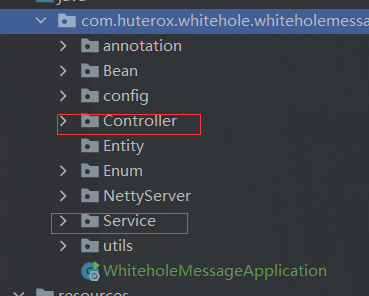
我们直接看到实现类
@Service
public class PushMsgServiceImpl implements PushMsgService {
@Override
public void pushMsgToOne(DataContent dataContent) {
ChatMsg chatMsg = dataContent.getChatMsg();
Channel channel = UserConnectPool.getChannel(chatMsg.getReceiverId());
if (Objects.isNull(channel)) {
throw new RuntimeException("未连接socket服务器");
}
channel.writeAndFlush(
new TextWebSocketFrame(
JsonUtils.objectToJson(chatMsg)
)
);
}
@Override
public void pushMsgToAll(DataContent dataContent) {
ChatMsg chatMsg = dataContent.getChatMsg();
Channel channel = UserConnectPool.getChannel(chatMsg.getReceiverId());
UserConnectPool.getChannelGroup().writeAndFlush(
new TextWebSocketFrame(
JsonUtils.objectToJson(chatMsg)
)
);
}
}
之后是这个:
@RestController
@RequestMapping("/push")
public class PushMsgController {
/**
* 同时为了方便操作,我们还可以提取出
* Controller
* */
@Autowired
PushMsgService pushMsgService;
@RequestMapping("/pushOne")
public void pushOne(DataContent dataContent){
pushMsgService.pushMsgToOne(dataContent);
}
@RequestMapping("/pushAll")
public void pushAll(DataContent dataContent){
pushMsgService.pushMsgToAll(dataContent);
}
}
看到了吧,我们可以直接通过Controller去进行客户端的消息的推送。好处就是我们可以通过Controller做很多处理,同时方便实现一些功能,例如刚刚的那个消息类型判断,全部写在一块,显然是不太好的,当然这样有一定的性能损耗,看你的需求,要安全就走这个比如一些重要消息的推送啥的,不太需要,例如用户聊天就直接走Netty的。
总结
差不多就这样了,因为练车嘛,没有什么新东西,浅浅水一篇博文~
更多推荐
 已为社区贡献8条内容
已为社区贡献8条内容


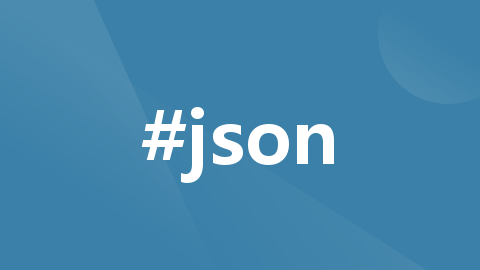
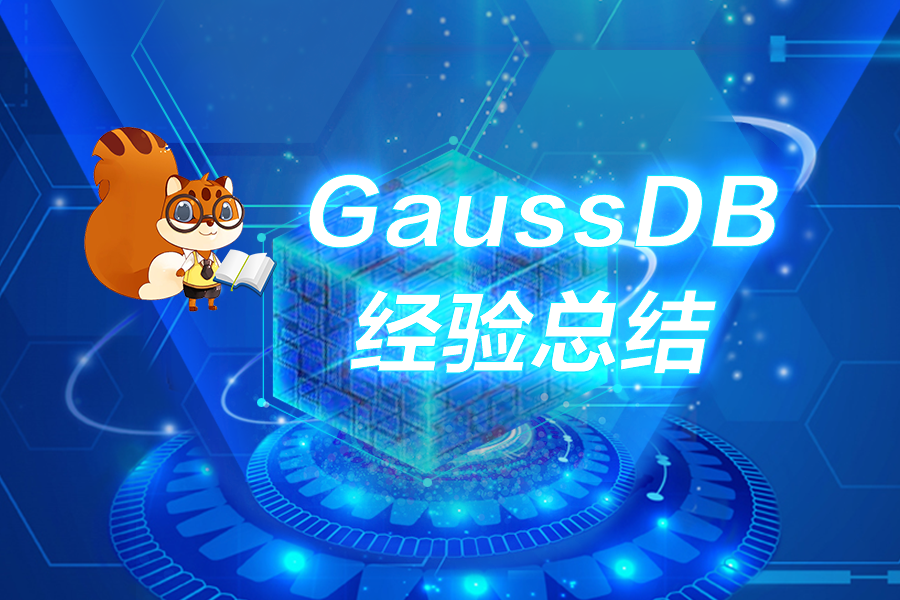





所有评论(0)